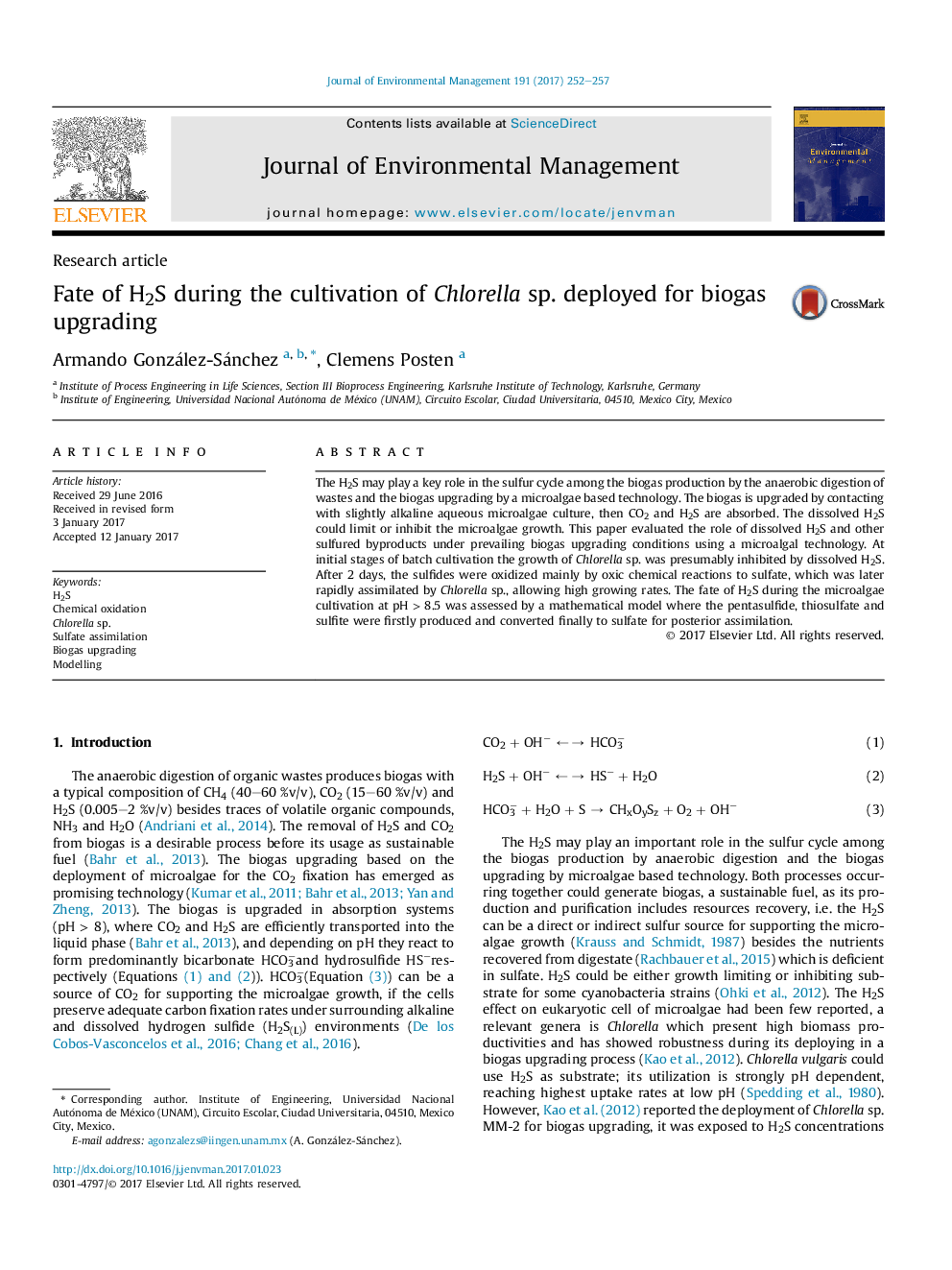| Article ID | Journal | Published Year | Pages | File Type |
|---|---|---|---|---|
| 5116793 | Journal of Environmental Management | 2017 | 6 Pages |
Abstract
The H2S may play a key role in the sulfur cycle among the biogas production by the anaerobic digestion of wastes and the biogas upgrading by a microalgae based technology. The biogas is upgraded by contacting with slightly alkaline aqueous microalgae culture, then CO2 and H2S are absorbed. The dissolved H2S could limit or inhibit the microalgae growth. This paper evaluated the role of dissolved H2S and other sulfured byproducts under prevailing biogas upgrading conditions using a microalgal technology. At initial stages of batch cultivation the growth of Chlorella sp. was presumably inhibited by dissolved H2S. After 2 days, the sulfides were oxidized mainly by oxic chemical reactions to sulfate, which was later rapidly assimilated by Chlorella sp., allowing high growing rates. The fate of H2S during the microalgae cultivation at pHÂ >Â 8.5 was assessed by a mathematical model where the pentasulfide, thiosulfate and sulfite were firstly produced and converted finally to sulfate for posterior assimilation.
Related Topics
Physical Sciences and Engineering
Energy
Renewable Energy, Sustainability and the Environment
Authors
Armando González-Sánchez, Clemens Posten,
